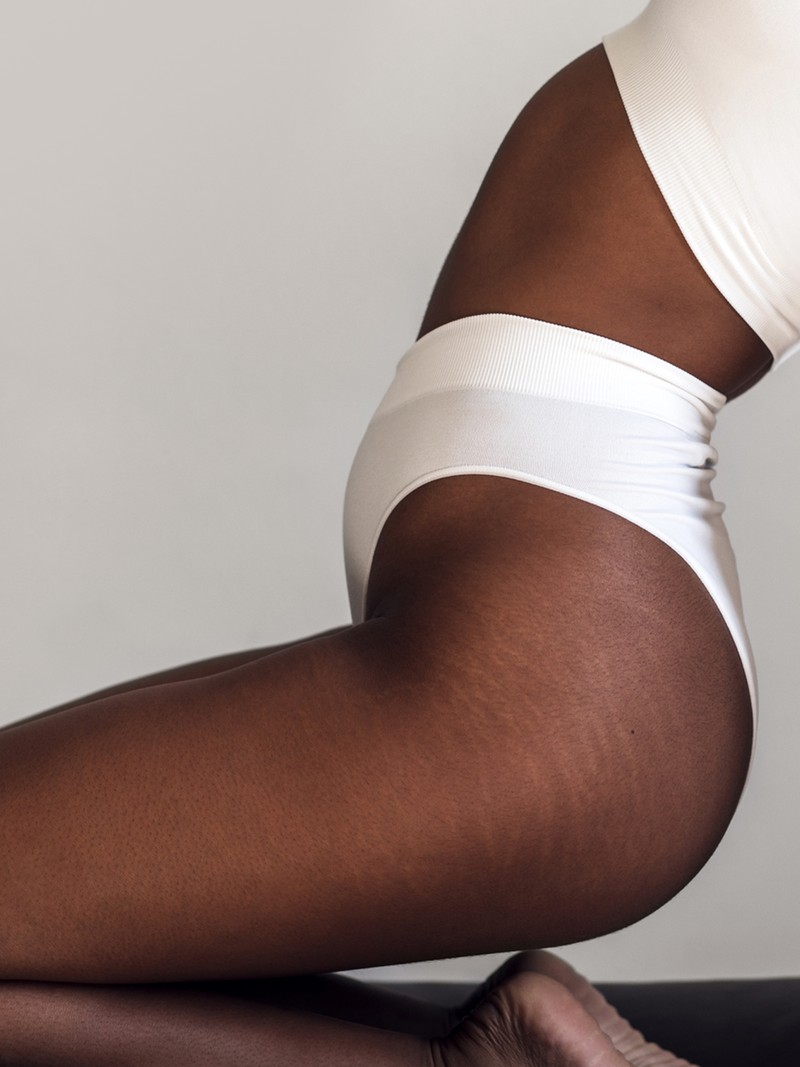An Expert Shares Her Secrets For A Stronger Pelvic Floor
Start By Grasping What The Pelvic Floor Does
“The pelvic floor is home to a crucial set of muscles, tissues, ligaments, nerves and blood vessels that contribute to overall core strength and hold key organs like the bladder, bowel, vagina and uterus in place. As well as providing support for our pelvic organs, the pelvic floor also allows us to control urination and open our bowels, contributes to sexual pleasure and provides support to the spine. Think of the pelvic floor muscles as the foundation of a house – they’re essential for support.”
See The Bigger Picture
“There is so much more to pelvic floor health than the perinatal period. In fact, our pelvic floor journey starts long before this time, starting from the time we are potty trained. There are so many key life stages that can play a part in our pelvic floor health and it’s vital for us to consider them all – from childhood habits to the teenage years, pregnancy, perimenopause and beyond. Like other areas of our health, issues don’t arise from one isolated event: it’s the culmination of smaller contributors over years. The most common misconception is that only pregnancy and birth impact our pelvic floor, when in fact there are so many factors. For example, the pelvic floor is what allows us to have comfortable and pleasurable intercourse.”
Be Proactive
“The trouble with pelvic health is that we are often not fully introduced to it, or its importance, until we’re pregnant. The outrage I hear from women, when they start to experience unpleasant and often embarrassing symptoms, is why they were not told about the importance of their pelvic floor muscles earlier. The average age of a pregnant woman in the UK is 31, so a significant amount of life passes before we are even introducing women to their pelvic health and pelvic floor muscles, and even then, we aren’t doing it well. In fact, recent guidelines have stated that girls aged 12-17 should be taught about pelvic floor anatomy as part of the school curriculum.”
Know Constipation Plays A Part
“In childhood, children commonly struggle with constipation, which leads to habits of straining to poo from very early on. Straining to pass a stool over the years can take its toll on the pelvic floor, causing it to weaken. Plus, constipation is more common in women than men. If you have children, you may have noticed that once they were walking but still wearing nappies, they would squat to poo. You could tell when they were doing a poo when you found them having a private moment and a squat. This is because squatting is an intuitive movement for us as humans, and yet as we grow up and start to use toilets, this changes. When we squat, the pelvic floor muscles lengthen, making it easy for poo to pass out without needing to strain. To take pressure off your pelvic floor, try using a stool or step to raise your feet up off the floor when you’re on the toilet.”
Recognise The Symptoms
“One in three women experience urinary incontinence, around one in ten experience faecal incontinence and 50% of women will have some degree of pelvic organ prolapse. Any leakage of urine during exercise or daily life, pain with using tampons, pain with intercourse, feeling like your bladder rules your life, or struggling to open your bowels at any age suggest your pelvic floor could be stronger. You should be able to comfortably go for a wee around six to eight times a day with a normal urge that doesn’t cause you distress. You should also be able to pass a stool anywhere from three times a day to three times a week and be able to exercise without leakage and be able to go out without fear of not making it to the toilet. These should be your baseline. If you are struggling with any of these issues, flag them with your doctor.”
Do More Than Kegels
“Though we often hear a lot about the importance of contracting our pelvic floor muscles and doing our ‘squeezes’, they’re not the whole picture. Our ability to contract and strengthen the muscles is just one piece of the puzzle – we also need to think about flexibility as well as coordination and endurance. Plus, the pelvic floor has two different types of muscle fibres – fast and slow twitch. To work on your fast-twitch muscles, contract and release the pelvic floor ten times in a row; for the slow twitch, contract and hold for up to ten seconds while you breathe in and out, then fully relax the muscles. Holding for ten seconds can be tricky initially, but you’ll get there. Get into the habit of doing this ten times every day.”

Incorporate Breathwork
“The diaphragm sits at the base of your rib cage, above your pelvic floor, and as the diaphragm moves when we breathe in and out, so does the pelvic floor. Therefore, for most of us, starting with breathing really helps our pelvic floor function. The key is to focus on diaphragmatic breathing. Place one hand on your lower ribs and one hand on your tummy; take a deep breath in and expand your lower ribs into your hand. While doing this, your tummy should gently expand. Visualise and think about your ribs expanding in all directions – we call this 360° breathing. Try this for five to ten breaths and take your time. You can try lying, sitting or standing.”
Combine This With Pelvic Floor Connection
“Combine this breathing with pelvic floor connection. Taking a breath in, keep everything relaxed, and as you breathe out, think about holding in wind or squeezing your anus. Visualise the squeeze coming forwards and upwards to the pubic bone at the front of the pelvis, and then let the muscles fully relax. You should feel a gentle contraction around the anus and vaginal opening, while keeping your tummy, bottom and leg muscles relaxed. Most of us overdo it and give 1,000% when less effort is all that’s required.”
Stretch Regularly
“All muscles need to be flexible, and that includes the pelvic floor. A pelvic floor that’s less flexible will struggle with shock absorption, vital when it comes to any form of impact. We need the pelvic floor to move and respond to activity. The happy baby yoga pose is a great way to stretch the pelvic muscles. The pose will also stretch your inner thigh muscles, which are often implicated with a tight pelvic floor.”
Think About How You Exercise
“Running and high-impact exercise get a bad rap for causing pelvic floor problems, but this isn’t necessarily correct. While it is true these types of exercises exert pressure on the pelvic floor, problems only arise when the muscles lack strength or flexibility. So it isn’t that these activities are bad for the pelvic floor, just our muscles need optimum function to ensure we are symptom free. Moving with our breath can be helpful. Think about exhaling on the effort of a movement; for example, when standing up from a squat, which can help the natural activation of the pelvic floor. Also make sure you aren’t holding your breath when lifting weights, and approach any form of exercise gradually, progressing over time – whether this is how far you run or how heavy you’re lifting. Giving muscles time to adapt to a new load is important.”
Don’t Suffer In Silence
“Many of the symptoms we may experience that relate to our pelvic floor are still taboo, making it hard to open up and share. However, it’s vital to know that if you are struggling, there is help out there, and a pelvic-floor physio is a good place to start. We talk about incontinence, sex and doing a poo like we talk about the weather, and you don’t have to suffer in silence. Symptoms like incontinence, pain during sex, struggles to open our bowels and living with ongoing pain can have a huge impact on our mental and emotional wellbeing.”
Seek Support If You Have Endometriosis
“A pelvic-floor physio can’t treat a condition like endometriosis, but we can help with the surrounding symptoms. Commonly, women who experience pain with endometriosis have a pelvic floor that’s more ‘switched on’. This means the muscles are less able to relax fully, which can trigger other symptoms and more pain. Women may also have scars from surgery that could benefit from massage, as well as increased tone in their tummy muscles and altered breathing patterns. There’s a lot a pelvic-floor physio can do to support women living with endometriosis and improve their quality of life.”
Clare’s Top Pelvic Floor Tips…
Know Your Anatomy: This includes your pelvic floor, bladder and bowels. Understand and know the anatomy of your vulva, too. Getting to know your body is key so you know when things aren’t right.
Prevent Constipation: Think fluid, fibre and movement to relieve pressure from the pelvic floor.
Be Active: Our body and muscles love movement.
Don’t Ignore Symptoms: However small they are, seek help.
Manage Stress: This can have a huge impact on how we breathe and our pelvic floor.
For more from Clare or to buy her new book, Strong Foundations, visit Clare-Bourne.com
DISCLAIMER: Features published by SheerLuxe are not intended to treat, diagnose, cure or prevent any disease. Always seek the advice of your GP or another qualified healthcare provider for any questions you have regarding a medical condition, and before undertaking any diet, exercise or other health-related programme.
DISCLAIMER: We endeavour to always credit the correct original source of every image we use. If you think a credit may be incorrect, please contact us at info@sheerluxe.com.


